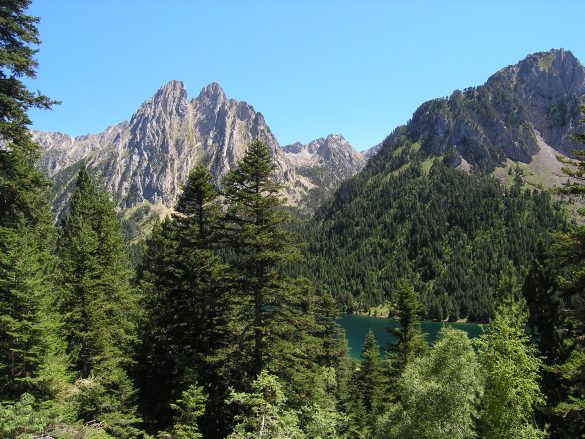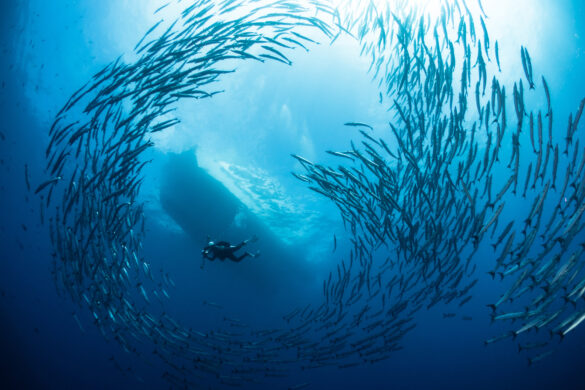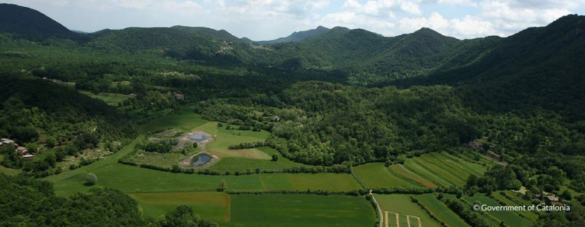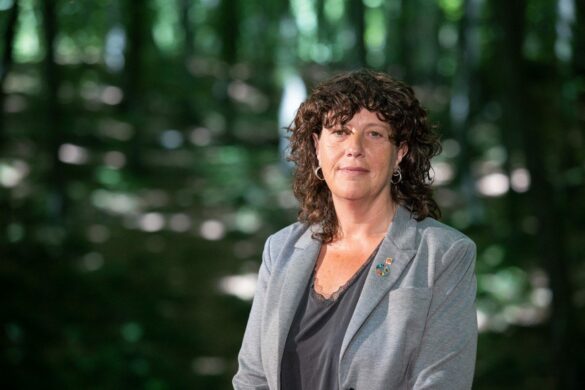The Catalan Strategy for Adaptation to Climate Change, 2021-2030 (ESCACC30) analyzes the vulnerability of 17 areas to the risks of climate change: 4 natural systems, 10 socioeconomic areas, and 3 territories. The reduction of the vulnerability of these 17 areas is articulated through 76 operational objectives that are developed through a total of 312 measures. The deployment of the measures is specified in two five-year work programs (2021-2025 and 2026-2030) thanks to the execution of adaptation actions. Below are highlighted three actions already implemented corresponding to a natural system (forests and forestry), a socioeconomic area (agriculture and livestock), and a territory (mountain).
- Forests and forestry
Operational objective: definition and promotion of forest management that increases the resistance and resilience of forests to the risks of climate change (especially forest fires), taking into account the conservation of biodiversity and the specific characteristics of the stands forestry.
Adaptation measure: promote the agro-forestry space through an agricultural and forestry mosaic with the aim of fire prevention.
Adaptation action: a pilot test of the Life MIDMACC project on the 172-hectare Mas Marès estate (Celler Espelt), in the Cap de Creus Natural Park. El Celler Espelt, on the Mas Marès estate, combines wine activity with the restoration of natural systems and the landscape, fire prevention, species recovery programs, and the management and protection of the marine environment. The north wind, called Tramuntana, which is very present in this territory, increases the risk of fire. This fact was decisive at the time of proposing the forest management and improvement project of the farm. Both the farm and the ecosystems are protected from fires by two elements: extensive transhumance livestock, which comes from the Pyrenees, and vineyard, olive, and cereal agriculture. The mosaic thus created also helps to increase biodiversity.
On the night of February 21 to 22, 2022, the Alpha Plan for the prevention of forest fires was activated: the year 2021 and the winter of 2022 was very dry, with little precipitation, and it had not rained for more than 90 days; it also blew Tramuntana with blows greater than 80 km/hour. That night a fire started and the fire reached the farm through the pasture area, as it moved towards the vineyards, its propagation speed slowed down. This fact allowed the firefighters to control the fire in this area very quickly, and focus the extinction work on other more dangerous areas to prevent the fire from reaching urban areas (city of Roses, Costa Brava). The planning against forest fires worked perfectly in the Mas Marès estate as illustrated in this image.

- Agriculture and livestock
Operational objective: improve the health/quality of the soil, favoring the organic carbon reservoir.
Adaptation measure: recover and develop soil and crop management practices that improve soil water retention and the amount of water used by crops.
Adaptation action: the creation of the Drought Observatory in the Terra Alta region (southern Catalonia). Within the framework of the Life Clinomics project, the Terra Alta Drought Observatory (OSTA) has been created, which monitors the water status of vineyards, olive, and almond trees. Every week a bulletin is published with information on precipitation and soil moisture in rainfed farms. For irrigated farms, irrigation recommendations are also made. Bulletins are published every Monday morning. The Observatori de l’Ebre, the Escola Agrària de Gandesa and the Consorci de Politiques Ambientals de les Terres de l’Ebre (COPATE) collaborate in this observatory.
The increase in the frequency of periods of drought in Catalonia makes more efficient use of water more necessary than ever, which, in turn, improves the quality of the soil and crops. The Drought Observatory, through the combined use of soil moisture data, obtained by a network of sensors and data supplied by interpretation of satellite images, provides the agricultural sector with recommendations and reports on the most suitable times and allocations for irrigation. with efficiency in the cultivation of vineyards, olive trees, and almond trees.

- Mountain
Operational objective: improve knowledge about the impacts of climate change in mountain territories, promote the training and awareness necessary to manage change, and establish new governance systems that allow the development of more integrated policies.
Adaptation measure: promote research projects and generate knowledge on the impacts of climate change and the possibilities of adaptation in natural systems and socioeconomic areas of mountainous areas.
Adaptation action: Bulletin of Climate Change Indicators for the Pyrenees.
This year 2022, the first Butlletí d’Indicadors de Canvi Climàtic dels Pirineus (BICCPIR) has been presented, which provides information on the evolution of the climate of the Pyrenees between the years 1959 and 2020, through a set of indicators grouped by systems. The BICCPIR is one of the results of the Adapyr project, in which 12 institutions from France, Andorra, and the Spanish State have participated under the coordination of the Pyrenean Climate Change Observatory (OPCC) of the Pyrenees Working Community. The bulletin provides, for the first time, a joint vision of the state of climate change in the entire Pyrenees massif and will have an annual periodicity, similar to the Butlletí Annual d’Indicadors Climàtics that the Servei Meteorològic de Catalunya (SMC) carries out for Catalonia. It has been, precisely, the SMC, the entity that has defined the design and contents of the bulletin based on the contributions of the different partners of the project. Within the framework of the Adapyr project, an agreement for the provision of meteorological and snow data has been signed between the five entities that manage official meteorological networks: State Meteorological Agency, Météo France, Servei Meteorològic Nacional d’Andorra, Euskalmet, and SMC. This important cross-border agreement will allow the newsletter to be updated and expanded in future editions.








